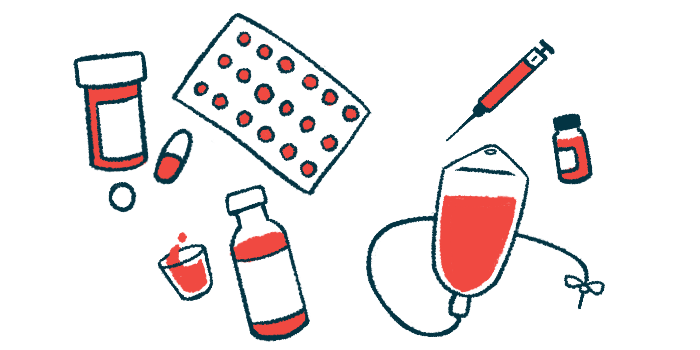Woman with HAE, normal C1-INH has attacks despite preventive care
Type 3 has been described more frequently in women

Despite long-term preventive treatment, a 38-year-old woman with hereditary angioedema (HAE) with normal C1-inhibitor levels had severe episodes of disease worsening, as described in a recent case report.
The life-threatening sequelae and decreased quality of life illustrate the need for more research with this rare form of HAE, according to the researchers.
“This case illustrates the many gaps in knowledge that we still have regarding [this form of HAE]. There appears to be an underlying pathway and/or genetic mutations contributing to these episodes, and exploring these case studies is a necessary avenue to help elucidate the drivers of this disease,” the researchers wrote in the report, “Hereditary Angioedema with Normal C1 Esterase Inhibitor Refractory to Long-Term Prophylaxis: A Case Report,” which was published in Cureus.
HAE is marked by sudden and recurrent swelling attacks in the deeper layers of the skin, the upper airways, and the gastrointestinal tract. In severe cases, the disease can become life-threatening because airway swelling and constriction can lead to asphyxiation.
The disease can be subdivided into two main types — type 1 and type 2 — both caused by genetic mutations in the SERPING1 gene, which encodes a protein called C1-inhibitor (C1-INH). Mutations in this gene can lower the production of the protein (type 1) or lead to a less functional protein being produced (type 2).
C1-INH blocks the activity of two other proteins — plasma kallikrein and coagulation factor 12, which promote the production of bradykinin, a pro-inflammatory molecule that can trigger swelling. In both HAE type 1 and 2, insufficient C1-INH can cause bradykinin levels to rise too high and trigger an attack.
The levels and function of C1-INH are normal in the rarer HAE type 3, called HAE nC1-INH. Several genetic mutations have been associated with this form of the disease, including in the F12 gene, which gives instructions for making coagulation factor 12.
Although uncommon, HAE nC1-INH symptoms are similar to those of HAE type 1 and 2 and may include swelling of the face, hands, feet, and airway. HAE nC1-INH has been described more frequently in women and was thought for many years to be dependent on estrogen, a female sex hormone.
Considering a HAE nC1-INH diagnosis
A team of researchers in the U.S. described the case of a 38-year-old woman with a 21-year history of angioedema, with attacks she attributed to medications to control blood pressure and pain relief, as well as eating mango.
After she received her first COVID-19 vaccine (Spikevax) in 2020, she had a severe allergic reaction that required her to be admitted to an intensive care unit. After this, she had frequent severe attacks and went to an allergy clinic.
Since she had normal C1-INH levels and function, an HAE nC1-INH diagnosis was considered. No genetic mutations were seen in the SERPING1 gene nor in any other genes linked to HAE nC1-INH, such as F12, PLG, and ANGPT1.
Researchers reported she had hoarseness, right upper lid swelling with visual impairment, and tongue swelling. Administering Ruconest, an intravenous man-made form of C1-INH, eased her symptoms by 75–80% within 30-45 minutes.
The woman then started a regimen of on-demand treatment with Ruconest and Firazyr (icatibant) for acute attacks, and Orladeyo (berotralstat) for long-term prevention (prophylaxis).
This eased her symptoms for a few days until she returned to the hospital with severe throat swelling that required admission to intensive care. She was intubated and treated with medications to alleviate allergy symptoms, Berinert, and fresh frozen plasma.
After her discharge, she was prescribed Haegarda along with Orladeyo to prevent HAE attacks. She continued to have more attacks that required hospital intervention.
A new treatment regimen was established — Sajazir to treat acute HAE attacks (instead of Firazyr) and Takhzyro to prevent them (instead of Orladeyo). Although this alleviated her symptoms, she continued to have episodes of severe disease worsening, including one that led to another hospitalization.
The researchers said increased estrogen levels might have triggered the disease, considering their role in HAE nC1-INH exacerbations (episodes of disease worsening) and the fact that her symptoms started in adolescence.
She is now on a trial of danazol (sold as Danocrine), a man-made steroid similar to testosterone that reduces estrogen production by the ovaries, and is considering surgery to remove her ovaries.
“However, due to the large side effect profile, these treatments are not currently considered first-line therapy. These treatments need further investigation to address the estrogen-driven component of this disease,” the researchers wrote. “Recent analysis has shown 56.7% of patients with HAE nC1-INH experience a delay in diagnosis of at least 10 years from the initial presentation.”
They said, given the low prevalence of HAE nC1-INH, a diagnosis of it should be considered when patients are negative for HAE types 1 or 2.







